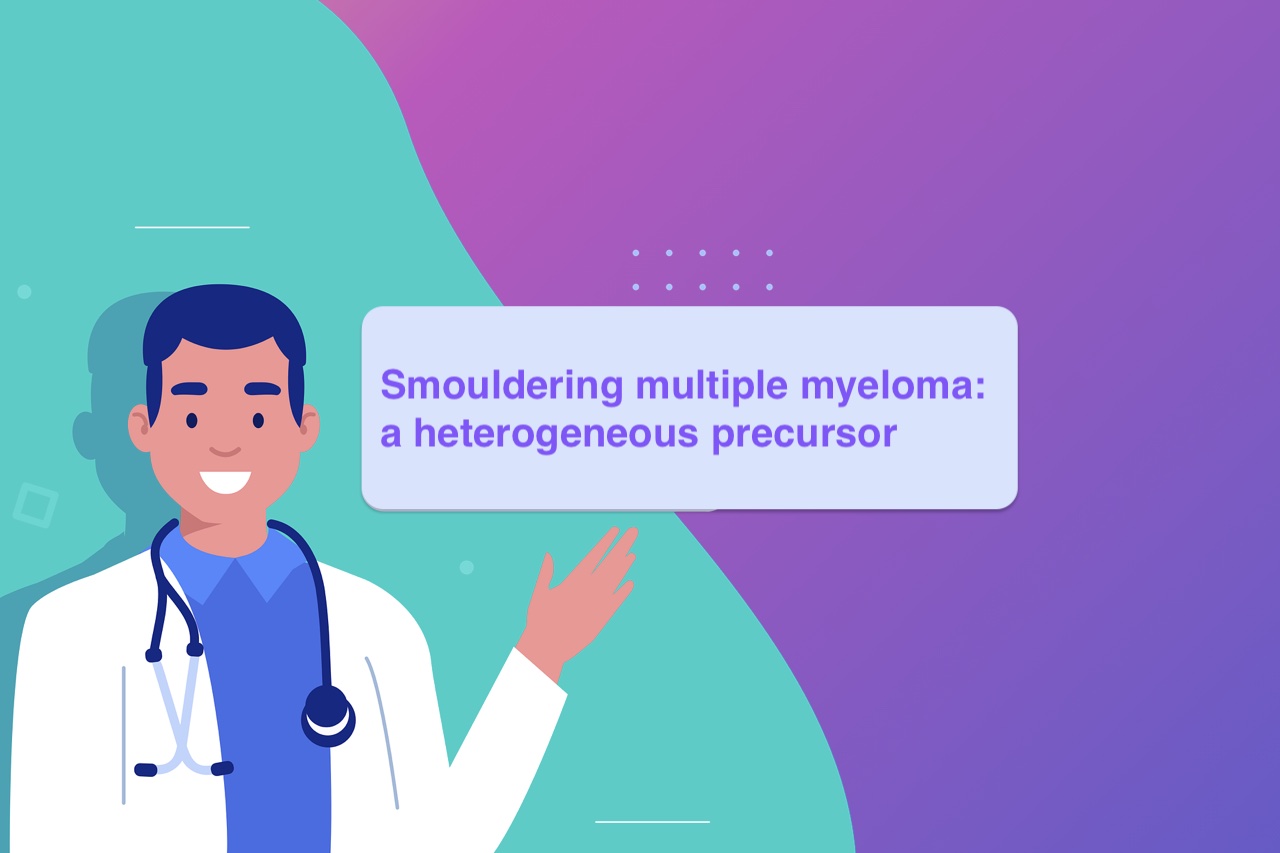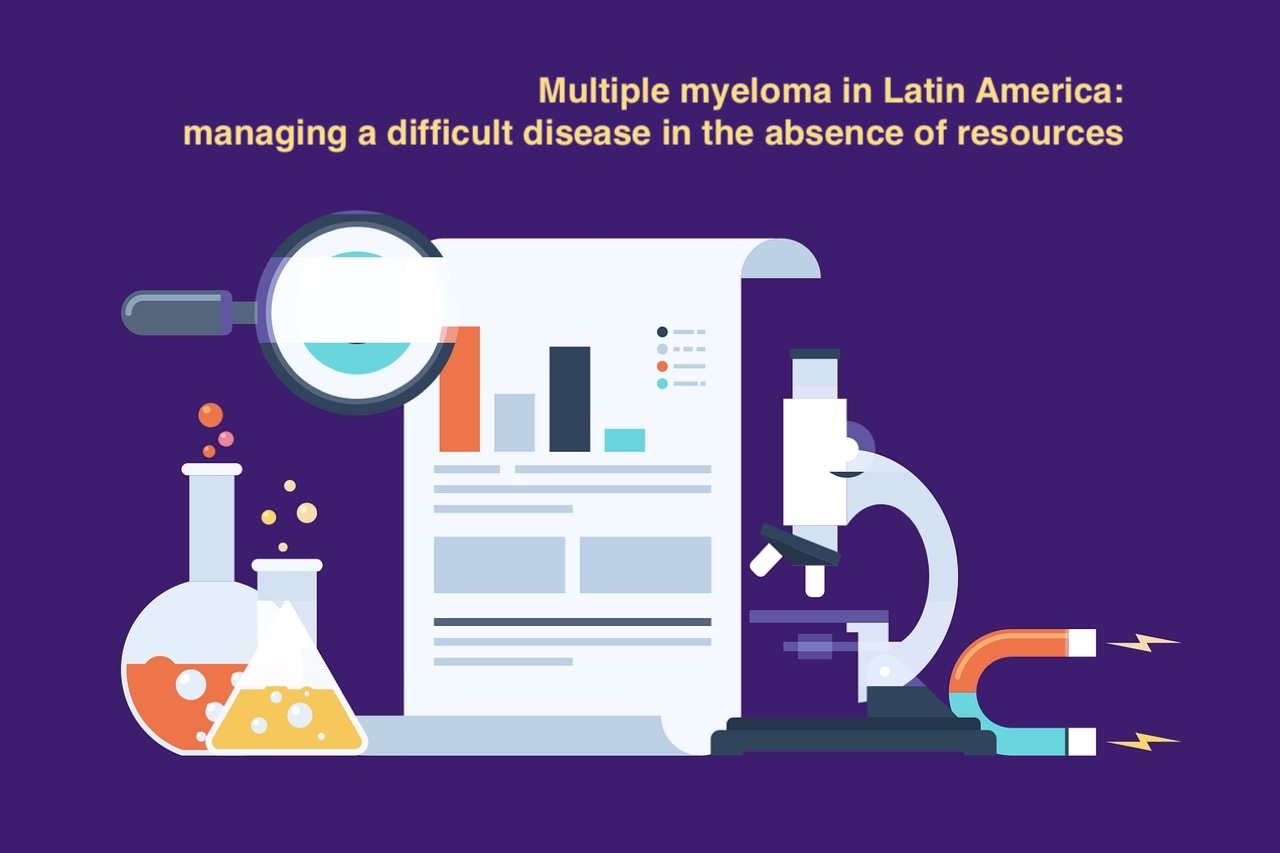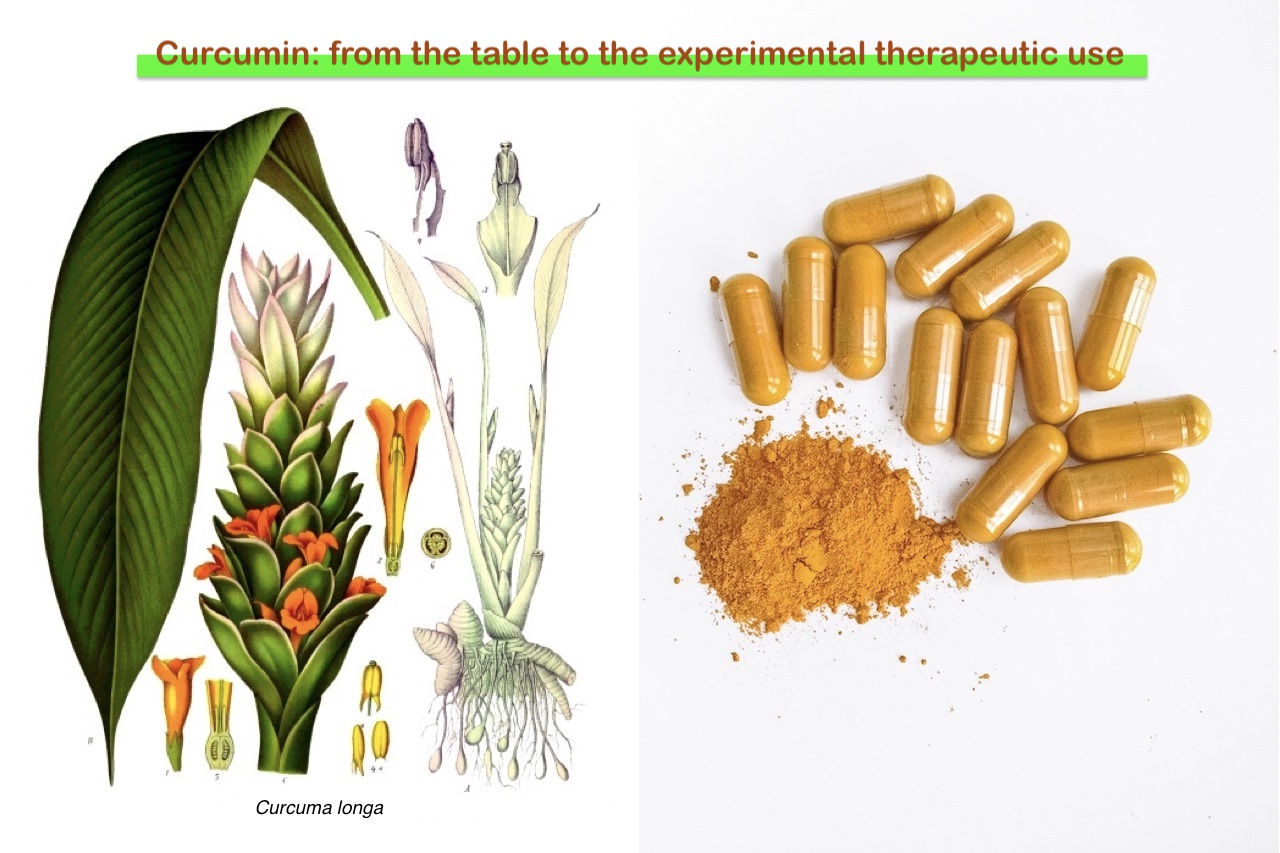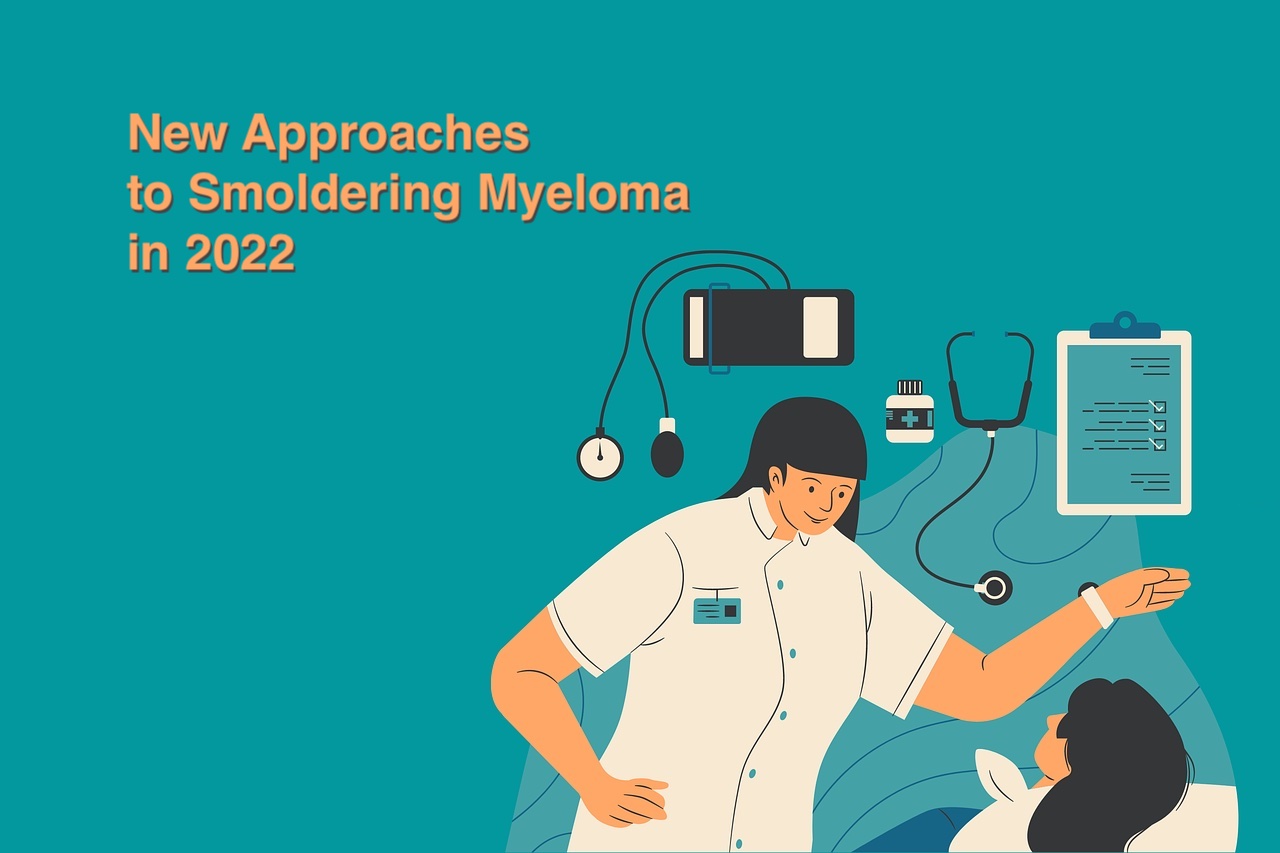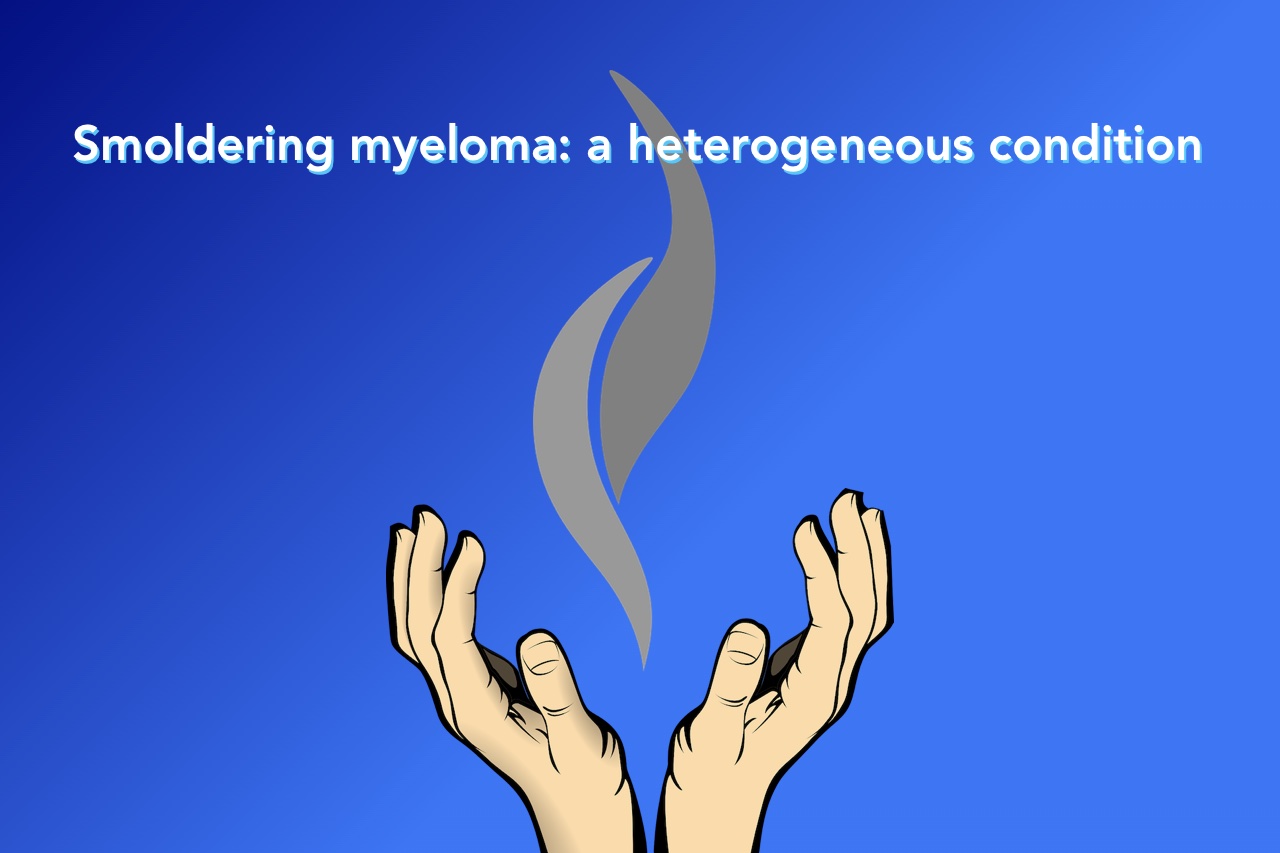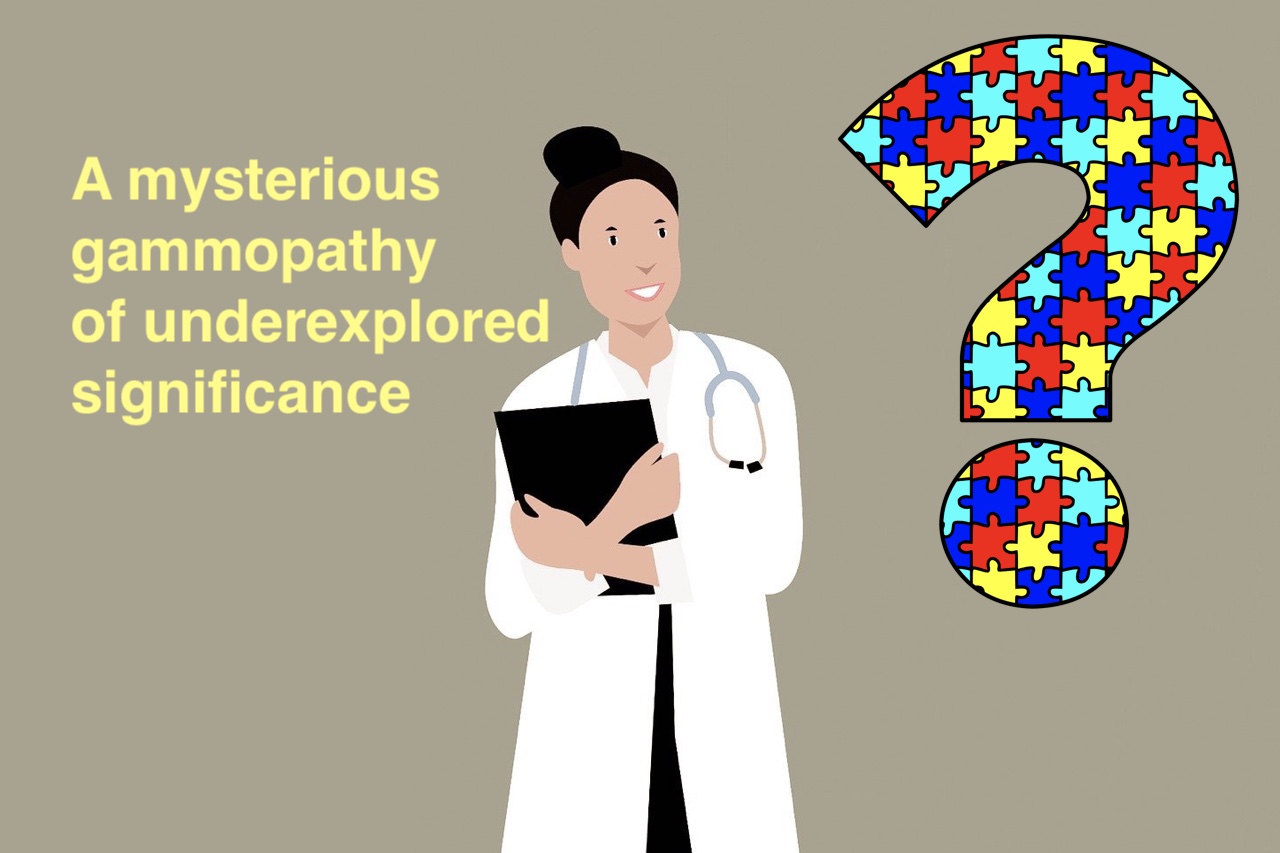Today I am going to introduce the last part of Doctors Rajkumar and Kumar‘s article. (1)
It’s an interesting description of smouldering multiple myeloma and its treatment possibilities.
What is a smouldering multiple myeloma?
Smouldering multiple myeloma is a precursor of a symptomatic myeloma. Sure enough in smouldering myeloma your plasma cells in the bone marrow produce an amount of abnormal protein (the so-called Monoclonal protein) of ≥3 g/dl, so the same quantity of symptomatic myeloma.
However in smouldering myeloma you don’t have any myeloma defining events (MDE), so the following conditions are always absent in smouldering myeloma:
- end-organ damage (hypercalcemia, renal insufficiency, anaemia, or bone lesions),
- bone marrow clonal plasma cells ≥60%,
- serum involved to uninvolved free light chain (FLC) ratio ≥100
- more than one focal lesion (5 mm or more in size) on magnetic resonance imaging (MRI). (2)
Smouldering myeloma is a heterogeneous entity
Nowadays scientific knowledge shows us that smouldering myeloma is not a uniform condition. Indeed the authors divided smouldering myeloma in three separated groups:
- a low-risk smouldering myeloma, so a situation that presents a low risk to become a symptomatic myeloma
- a high-risk smouldering myeloma, which presents indeed a high-risk to develop a symptomatic myeloma
- an intermediate-risk smouldering myeloma. (3)
To understand the right group for each patient, doctors use three parameters:
- Monoclonal protein in the blood >2 g/dL
- Serum free light-chain ratio in the blood >20
- Plasma cells in the bone marrow >20%
Low-risk smouldering myeloma: watch and wait
If you have a low-risk smouldering myeloma, a periodical medical examination by your haematologist with some routinary blood tests is enough.
High-risk smouldering myeloma: an untimely but useful treatment
In this situation the authors recommend to start the therapy. A possibility is represented by the use of Lenalidomide or the couple Lenalidomide and dexamethasone (that is also called Rd).
Lenalidomide (Revlimid®) is a drug, that is similar to Thalidomide. It is powerful and offers many advantages, such as the death of tumoral cells and the inhibition of new vessels development. But be also careful, because Lenalidomide can cause deep vein thrombosis and pulmonary embolism; to avoid it, a good prophylaxis is therefore necessary, for example with aspirin.
A Spanish and an American scientific study has proven good advantages for the couple Lenalidomide-dexamethasone for patients in rapport to the simply and periodic medical observation. Lenalidomide is able to slow down the progression of smouldering myeloma in symptomatic myeloma, by slowing down the appearance of myeloma symptoms, the so-called Myeloma Defining Events (see above). (4),(5)
Many challenges await us
This overview has shown the great evolution of medical knowledge in term of this watershed condition. However, there is still a long way to go, and many other scientific studies are necessary.
Bibliography
(1) Multiple myeloma current treatment algorithms – PubMed (nih.gov)
(2) Kyle, R. A. et al. Clinical course and prognosis of smoldering (Asymptomatic) multiple myeloma. N. Engl. J. Med. 356, 2582–2590 (2007).
(3) Rajkumar, S. V., Landgren, O. & Mateos, M. V. Smoldering multiple myeloma. Blood 125, 3069–3075 (2015).
(4) Mateos, M.-V. et al. Lenalidomide plus dexamethasone for high-risk smoldering multiple myeloma. N. Engl. J. Med. 369, 438–447 (2013).
(5) Lonial, S. et al. Randomized trial of lenalidomide versus observation in smoldering multiple myeloma. J. Clin. Oncol. 38, 1126–1137 (2020).

